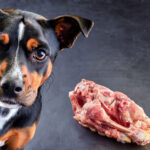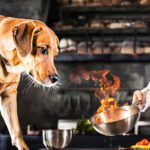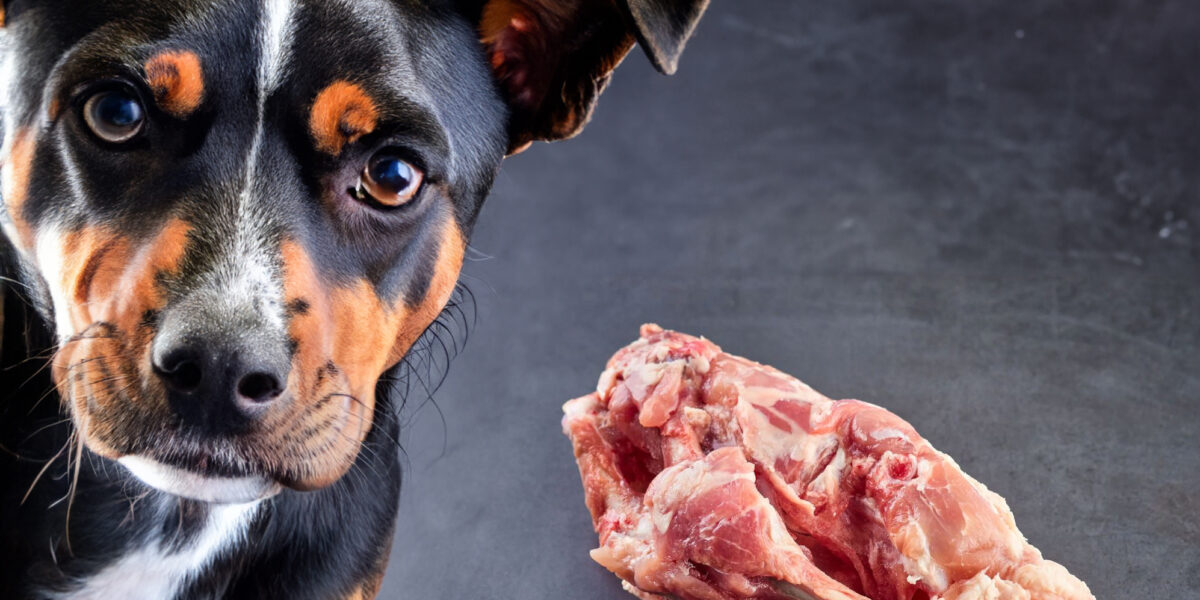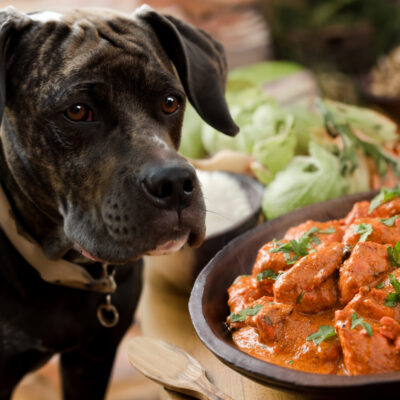When it comes to feeding our four-legged friends, it’s important to know what is and isn’t safe for them to eat. While there are a number of human foods that can be part of a healthy canine diet, there are some that may not be so great for them. One such food is chicken frames. In this blog post, we’ll be digging into the facts to answer the question: Should your dog chow down on chicken frames? We’ll look at the pros and cons of this type of food and how it can affect your pup’s health.
What are chicken frames?
Chicken frames, also known as chicken carcasses or frames, are the leftover bones and connective tissue after the meat has been removed from a chicken. They typically consist of the backbone, ribcage, and wingtips. While they may not look very appetizing to us humans, they can be a valuable source of nutrition for our furry friends.
Chicken frames are rich in essential nutrients such as calcium, phosphorus, and glucosamine, which are vital for maintaining strong bones, teeth, and joints in dogs. They also provide a good amount of protein, which is important for muscle development and repair. Additionally, chicken frames can help satisfy a dog’s natural instinct to chew, promoting dental health by reducing plaque and tartar buildup.
However, it’s important to note that chicken frames should always be fed raw, never cooked. Cooking the bones can cause them to become brittle and splinter, posing a serious risk of injury to your dog’s digestive tract. Raw bones, on the other hand, are more flexible and less likely to splinter.
When introducing chicken frames into your dog’s diet, it’s recommended to start with small amounts and gradually increase the portion size over time. This allows their digestive system to adjust and prevents any potential digestive issues. Additionally, it’s crucial to supervise your dog while they’re eating chicken frames to ensure they don’t swallow large pieces whole.
Nutritional benefits for dogs
Chicken frames can offer a variety of nutritional benefits for dogs. These leftover bones and connective tissue are packed with essential nutrients that can contribute to your furry friend’s overall health and well-being.
First and foremost, chicken frames are a fantastic source of calcium and phosphorus, which are essential minerals for maintaining strong bones and teeth. These minerals are crucial for puppies who are still developing their skeletal systems and for older dogs who may be at risk for bone density loss. By incorporating chicken frames into their diet, you can help support their bone health.
In addition to calcium and phosphorus, chicken frames also contain glucosamine, a compound that plays a vital role in maintaining healthy joints. As dogs age, joint issues such as arthritis can become more common. Providing them with glucosamine through chicken frames can help promote joint health and potentially alleviate discomfort.
Protein is another essential nutrient found in chicken frames. It is crucial for muscle development, repair, and overall growth. Dogs require a sufficient amount of protein in their diet to maintain strong muscles and support their active lifestyle.
Furthermore, chicken frames can promote dental health in dogs. Chewing on raw bones can help scrape off plaque and tartar buildup, reducing the risk of dental issues such as gum disease and tooth decay.
Overall, incorporating chicken frames into your dog’s diet can provide them with essential nutrients, support their bone and joint health, promote muscle development, and help maintain good dental hygiene. However, it’s essential to remember that moderation is key and to follow the proper guidelines for feeding raw bones to ensure your dog’s safety.
Risks and potential health concerns
While chicken frames can offer several nutritional benefits for dogs, there are also some risks and potential health concerns associated with feeding them to your furry friend. One of the main concerns is the risk of choking or gastrointestinal blockages. Chicken frames, especially if they are not properly chewed, can break off into sharp pieces that may get lodged in your dog’s throat or digestive tract. This can lead to choking or serious internal injuries that may require surgical intervention.
Another potential health concern is bacterial contamination. Raw chicken, including chicken frames, can harbor harmful bacteria such as salmonella or campylobacter. These bacteria can cause gastrointestinal upset, vomiting, diarrhea, and in severe cases, even life-threatening infections. It’s essential to handle chicken frames safely and practice proper food hygiene to minimize the risk of bacterial contamination.
Additionally, if your dog has a history of dental issues such as weak or damaged teeth, feeding them chicken frames may not be suitable. The bones can be quite hard and may cause further damage to their teeth or gums.
It’s important to consult with your veterinarian before introducing chicken frames or any new food into your dog’s diet. They can provide guidance based on your dog’s specific needs and health conditions. If you do choose to feed chicken frames, always supervise your dog while they’re eating and ensure they chew thoroughly to minimize the risk of choking or other injuries.
How to safely incorporate chicken frames into your dog’s diet
Now that we’ve explored the pros and cons of feeding chicken frames to your dog, you might be wondering how to safely incorporate them into their diet. Safety should always be the top priority when it comes to our pets, so here are some tips to help you safely feed chicken frames to your furry friend.
First and foremost, it’s crucial to choose high-quality chicken frames from a reputable source. Look for frames that are fresh, have been handled and stored properly, and have not been exposed to any harmful bacteria. Avoid frames that have been cooked or have any added seasonings or sauces.
When introducing chicken frames to your dog’s diet, it’s important to start slow. Begin with small portions and gradually increase the amount over time. This allows their digestive system to adjust to the new food and minimizes the risk of any digestive issues. Always monitor your dog while they’re eating chicken frames to ensure they don’t swallow large pieces whole, which can pose a choking hazard.
It’s also recommended to supervise your dog during the chewing process. This helps prevent any potential injuries, such as bone splintering or gastrointestinal blockages. If your dog tends to gulp down food without chewing, you may want to consider alternative options for their dental health.
Lastly, remember to maintain proper hygiene when handling chicken frames. Wash your hands thoroughly after handling raw meat, and clean any surfaces or utensils that come into contact with the frames to prevent the spread of bacteria.
By following these guidelines, you can safely incorporate chicken frames into your dog’s diet and provide them with the nutritional benefits they offer. Remember to consult with your veterinarian before making any changes to your dog’s diet, as they can provide personalized advice based on your dog’s specific needs and health conditions.
With these tips in mind, you can make an informed decision about whether chicken frames are a suitable addition to your dog’s meal plan.
Other alternative protein sources for dogs
When it comes to feeding our furry friends, variety is key. While chicken frames can provide numerous nutritional benefits for dogs, it’s always good to have alternative protein sources to add some diversity to their diet. Here are a few options to consider:
- Fish: Fish is an excellent source of lean protein and omega-3 fatty acids, which are great for promoting a healthy coat and skin. Popular fish options for dogs include salmon, sardines, and mackerel. Just be sure to remove any bones and cook the fish thoroughly to avoid the risk of bacterial contamination.
- Lean meats: Lean meats such as turkey, lean beef, and pork can be a tasty and nutritious alternative to chicken frames. Be sure to trim off any excess fat before cooking and avoid using any seasonings or spices that may be harmful to your dog.
- Eggs: Eggs are a fantastic source of protein and can be a great addition to your dog’s diet. You can scramble them, boil them, or even make a tasty omelet. Just be sure to cook them thoroughly to avoid any potential risks of bacterial contamination.
- Dairy products: In moderation, dairy products such as plain yogurt or cottage cheese can provide a good source of protein for dogs. However, it’s important to note that some dogs may be lactose intolerant, so be sure to monitor your dog’s reaction and consult with your veterinarian if you have any concerns.
- Plant-based protein sources: For dogs who may have dietary restrictions or allergies, plant-based protein sources can be a viable option. Lentils, chickpeas, and quinoa are all high in protein and can be incorporated into your dog’s meals.
Remember, it’s essential to consult with your veterinarian before making any significant changes to your dog’s diet. They can provide guidance on portion sizes, preparation methods, and any potential concerns related to alternative protein sources. By offering a diverse range of protein options, you can ensure your dog gets a well-rounded and balanced diet.






